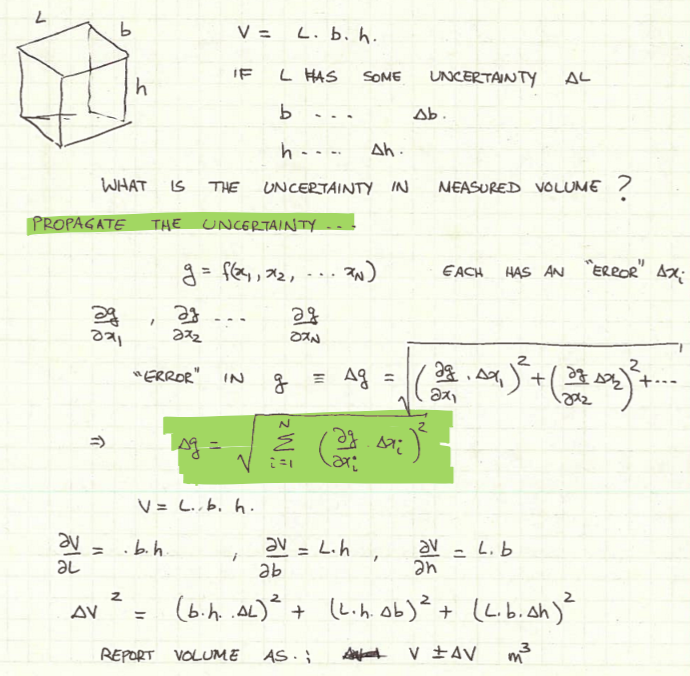Error Analysis and Statistical Spread of Data
Errors & Uncertainty Bounds
- There are two types of Error
- Systematic Error
- Occurs as a result as a flaw in the experiment design or apparatus
- Cause the measured values to be consistently higher or lower than the actual value
- They cannot be reduced by conducting repeated trails
- Examples
- Reading from the top of the meniscus when measuring volume
- Forgetting to zero a mass balance
- Random Error
- Caused by unpredictable changes in the experiment. There is an equal probability of the measured value being too high or too low
- Example
- Changes in the environment during the experiment
- Can be reduced by conducting repeated trails & by using a more precise apparatus
- Systematic Error
- When we talk about error we always consider Accuracy which is how close the measured values is from the actual value is made of two components
- Bias
- A measure of how far the expected value of the estimate is from the true value of the parameter
- Precision
- The smallest quantity that can be measured
- Bias
- Random Fluctuations are governed by some statistics, MOST physical phenomena follow a Gaussian or Normal Distribution.
Error/Uncertainty Propagation
Say we have a value that is dependent on multiple variable which each have their own uncertainties associated with their values. How can we find the uncertainty of this dependent variable
Say we have a value that is dependent on multiple variable which each have their own uncertainties associated with their values. How can we find the uncertainty of this dependent variable


